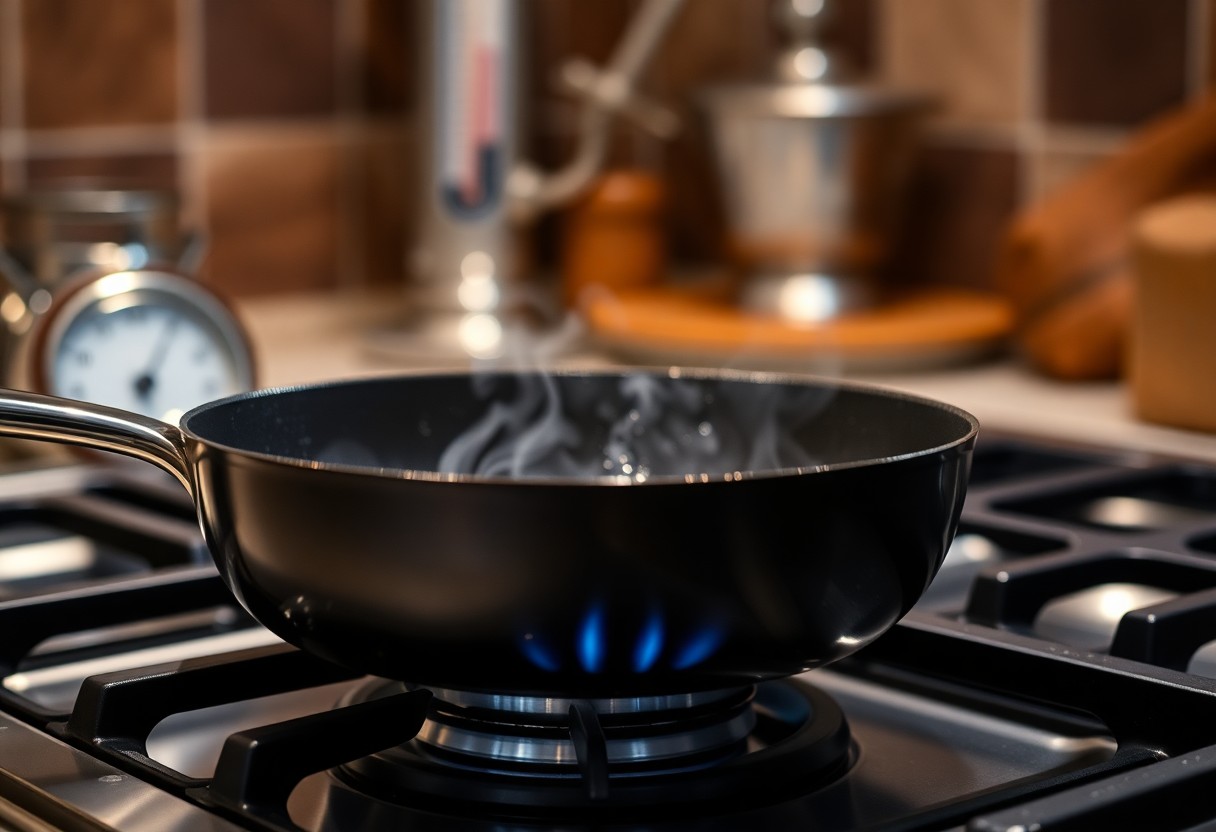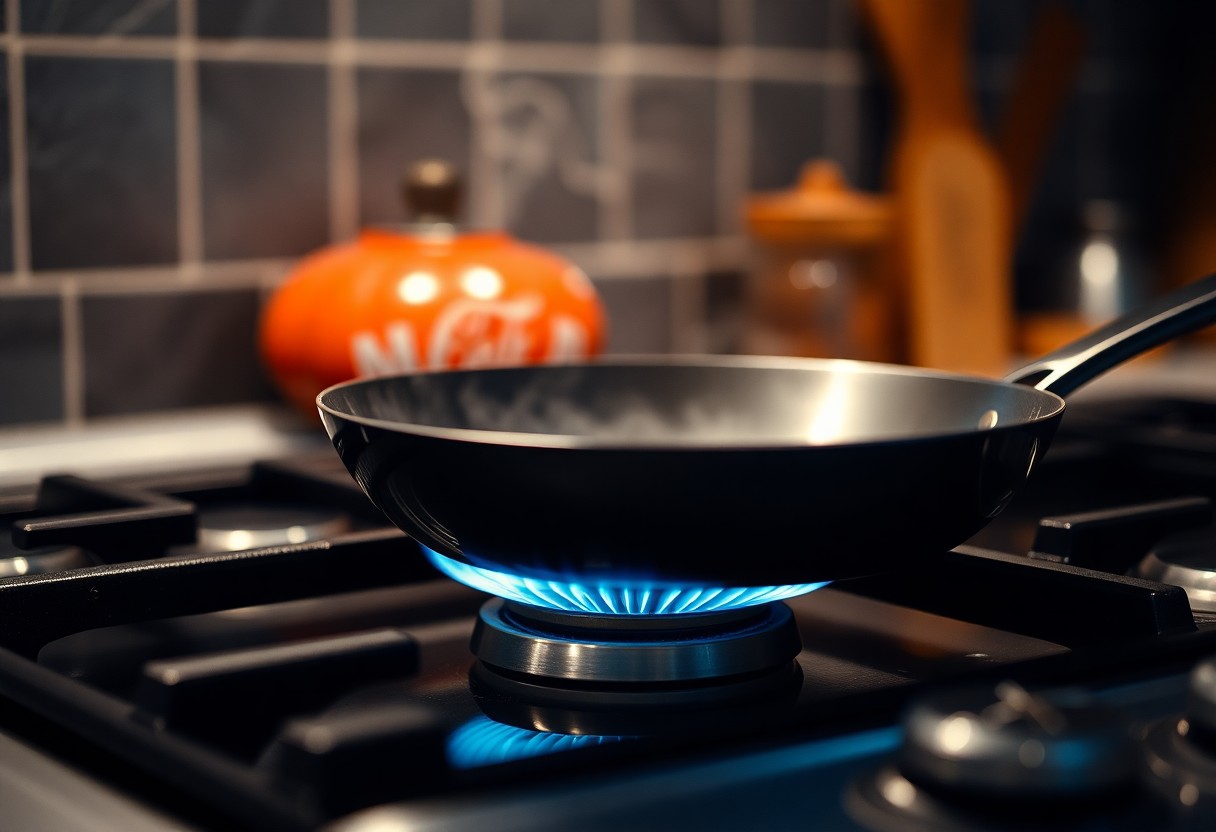With your culinary adventures often depending on the precise manipulation of heat, understanding what “medium heat” truly entails can significantly enhance your cooking experience.
You may find yourself questioning the right temperature for sautéing or simmering, and knowing that it typically falls between 350°F to 400°F can help you achieve optimal results. This ranges not only shapes flavor and texture but can also prevent overcooking or burning your meals.
By mastering this aspect of stove heat, you empower yourself to create delicious dishes while ensuring safety and consistency in your cooking process.
Key Takeaways:
- Medium heat typically ranges between 300°F to 375°F, making it ideal for cooking methods like sautéing and simmering.
- Different stoves may have variances in temperature settings, so it’s important to learn how your specific stove operates to achieve consistent results.
- Visual cues, such as the appearance of oil or the bubbling of water, can help gauge medium heat without relying solely on numerical settings.
Decoding the Dial: How Stove Heat Is Measured
Understanding how stove heat is measured allows you to take control of your cooking. Most stoves feature dials that enable you to set heat levels ranging from low to high. These settings may vary slightly between different stove brands and models, which is why familiarizing yourself with your specific equipment can enhance your culinary success. Knowing how to interpret these thermal settings ensures you use the right intensity for simmering, sautéing, or frying, transforming your cooking experience.
Understanding the Temperature Range of Medium Heat
Medium heat typically falls within a specific temperature range that facilitates proper cooking without burning your food. Below is a breakdown:
| Measurement Type | Temperature Range |
|---|---|
| Fahrenheit | 300°F – 375°F |
| Celsius | 150°C – 190°C |
Units of Measurement: Fahrenheit vs. Celsius in Culinary Terms
Different regions use either Fahrenheit or Celsius, which can complicate your cooking endeavors. In the United States, Fahrenheit remains the standard, whereas Celsius dominates in most other countries. Familiarizing yourself with these temperature scales can help you avoid mishaps in cooking. Whether you are following an American recipe or one from abroad, understanding these measurements can significantly impact your results.
For American home cooks, the Fahrenheit scale typically applies, so being aware of what 300°F or 375°F means in Celsius helps when using international recipes or guidance. Converting temperatures is simple: for instance, a medium heat of 350°F translates to approximately 180°C.
Tools like conversion charts or smartphone apps can help bridge the gap between these measurement systems, allowing for seamless culinary exploration and ensuring your dishes turn out just right no matter the temperature format you’re accustomed to.
The Science of Cooking: Heat Transfer and Its Impact
Your understanding of heat transfer is pivotal in mastering cooking techniques. Heat transfer involves three primary methods: conduction, convection, and radiation. Each plays a distinct role in how your stovetop heat translates to food cooking. By grasping these mechanisms, you can fine-tune temperatures and enhance results in your culinary endeavors.
Conduction, Convection, and Radiation Explained
Conduction refers to heat moving through direct contact, such as a pan sitting on a burner. In contrast, convection involves the movement of heat through a fluid—whether air or liquid—circulating around the food, while radiation transfers heat in the form of electromagnetic waves, as seen in grills or broilers.
How Different Cookware Alters Heat Distribution
The type of cookware you choose significantly impacts heat distribution, affecting your cooking success. Materials like cast iron retain heat well and provide exceptional conduction, which is ideal for searing. Stainless steel offers quick responsiveness but transfers heat unevenly, while non-stick pans can promote more even cooking at lower temperatures, making them suitable for delicate items.
Understanding your cookware’s characteristics can lead to better cooking outcomes. For instance, using heavy-bottomed pots prevents hotspots and allows for more uniform heat distribution, important when simmering sauces or soups. If you switch from a lightweight aluminum pan to a thick, heavy-duty option, you will notice a remarkable difference in the way heat is retained and delivered, ensuring more consistent results with your favorite recipes.
Navigating Medium Heat in Different Cooking Techniques
Medium heat plays a pivotal role across various cooking techniques, offering a balance between cooking food evenly and developing flavors. Whether you’re sautéing a medley of vegetables, grilling marinated chicken, or simmering a rich sauce, understanding how to utilize medium heat will yield better results. By mastering this temperature, you can prevent burning while ensuring that your ingredients cook through without drying out or losing their zest.
Sautéing, Grilling, and Simmering: When to Use Medium Heat
With sautéing, medium heat allows vegetables to soften while retaining their vibrant color and crunch. For grilling, this temperature ensures that proteins char perfectly on the outside while staying juicy within. In the case of simmering, medium heat is important to meld the flavors of your dish together without boiling away important liquids, making it an ideal choice for sauces and stews.
Adjustments for Various Ingredients: Protein vs. Vegetables
Adjustments in heat may be necessary when cooking different ingredients. Proteins often require a higher initial heat to create a sear, but transitioning to medium heat maintains their tenderness. Vegetables, on the other hand, benefit from consistent medium heat throughout to prevent overcooking, especially when a crisp texture is desired.
When preparing proteins, like chicken or beef, a quick sear on high heat ensures you lock in juices and flavors. Following this with medium heat allows the inside to reach the perfect doneness without the outside burning. For vegetables, using medium heat from the start helps to soften them gradually, allowing natural sugars to develop and preventing a mushy texture.
Adjust as needed based on the type and thickness of your ingredients—thinner vegetables may cook faster while denser options, like root vegetables, might need a bit more time. Balancing these considerations can elevate your cooking, ensuring every component of your dish shines.

Common Misconceptions About Heat Settings
Understanding heat settings can often lead to confusion among home cooks. Many believe that if a recipe calls for “medium heat,” it will yield the same results on any stove. This oversimplification overlooks variances in stove capabilities and cooking techniques, which can dramatically influence the outcome of your dish.
The Myth of “Medium” as a One-Size-Fits-All
The term “medium heat” can vary greatly depending on your stove’s brand, design, and even age. A gas stove might heat more uniformly compared to an electric coil model, leading you to assume that “medium” means the same across all appliances. This myth can result in overcooked meals or underdone dishes, frustrating your cooking experience.
Why Your Stove Might Not Match Standard Heat Indicators
Your stove’s performance is not solely dictated by its heat settings; factors like burner size, material, and even the cookware you use can all affect the temperature. For instance, a powerful burner can reach higher temperatures faster than a conventional one, meaning what you consider “medium” might actually be approaching “high” on another stove. Additionally, the thermal conductivity of your pans can influence how heat is distributed, further complicating heat consistency.

Mastering Medium Heat: Tips for Home Cooks
Achieving perfect results on medium heat requires some finesse. Here are a few tips to enhance your cooking:
- Preheat your pan gradually to avoid sudden temperature spikes.
- Use a heavy-bottomed skillet for even heat distribution.
- Monitor your oil’s shimmer to gauge readiness – a gentle shimmer indicates the right temperature.
- Practice patience; allow food to cook evenly without constantly stirring.
This approach will help you achieve well-cooked meals that maintain their flavor and texture.
Using a Food Thermometer to Gauge Success
Investing in a food thermometer can change the game in your kitchen. With a reliable thermometer, you can pinpoint when your food reaches that perfect internal temperature, ensuring your meals are safe and delicious. For instance, cooking chicken to an internal temperature of 165°F guarantees it’s thoroughly cooked while staying juicy. This tool eliminates guesswork, making cooking on medium heat both simple and precise.
Adapting Traditional Recipes for Optimal Results
Traditional recipes often offer guidance on cooking at specific temperatures, but adapting them for medium heat can elevate your culinary game. Instead of adhering strictly to directions, consider adjusting cooking times based on your stove’s actual heat output.
For example, a recipe that requires high heat for sautéing might benefit from a transition to medium heat to develop flavors gradually. This adaptation allows ingredients to caramelize and meld, leading to richer, more complex dishes.
Another effective adaptation is to experiment with cooking durations, especially for methods like braising or simmering. While a recipe may specify high heat to begin the cooking process, switching to medium heat after initial browning prevents burning and allows for more thorough cooking.
The relationship between heat settings and cooking techniques can significantly affect dish outcomes. When adapting recipes, take the opportunity to taste and adjust as you go, ensuring the optimal balance of flavors and textures in each meal.
Final Words
To wrap up, understanding what “medium heat” truly means can significantly enhance your cooking experience and help you achieve the perfect results in your dishes. By recognizing the subtle differences in stove settings, you can adjust your cooking techniques and make better-informed decisions in the kitchen. As you practice and experiment with various heat levels, you’ll gain confidence in your culinary skills and refine your ability to create delicious meals.
FAQ
Q: What does “medium heat” actually mean in cooking?
A: “Medium heat” refers to a specific temperature range on a stovetop that generally falls between 300°F to 375°F (150°C to 190°C). This level of heat is often used for a variety of cooking tasks like sautéing vegetables, browning meat, or preparing sauces, providing a balance that allows for adequate cooking without immediately burning or overcooking the food.
Q: How can I accurately achieve medium heat on my stove?
A: Achieving medium heat can vary based on the type of stove you have (gas, electric, induction). For gas stoves, medium heat is typically about halfway between the low and high settings. On electric stoves, it might be a setting around 5 or 6 on the dial. Using a thermometer can help, but familiarity with your own stove temperature calibration will be the best guide.
Q: Why is understanding stove heat important for cooking?
A: Understanding stove heat is important because it directly influences how ingredients cook. Different foods require different cooking temperatures to achieve the desired results. Mastering the nuances of heat levels, including medium heat, can help prevent undercooking or burning, ultimately leading to higher quality meals.
Q: Can “medium heat” be adjusted for different cooking methods?
A: Yes, “medium heat” can be adjusted based on the cooking method being employed. For example, when frying, a slightly higher medium heat may be required to crisp food effectively, whereas simmering sauces might need a gentler medium heat to avoid evaporation or scorching. Adjusting by observing how ingredients respond to heat is often necessary.
Q: How can I tell if my pan is at medium heat before adding food?
A: There are several ways to determine if your pan is at medium heat. One common method is the water droplet test: sprinkle a few drops of water onto the surface; if they sizzle and evaporate quickly but not instantly, your pan is likely at medium heat. Additionally, you can gauge the heat by checking if oil shimmers or moves fluidly across the pan without smoking.

I’m passionate about making home cooking simple, enjoyable, and stress-free. Through years of hands-on experience, I share practical tips, smart meal prep ideas, and trusted kitchen essentials to help you feel more confident in the kitchen every day.
